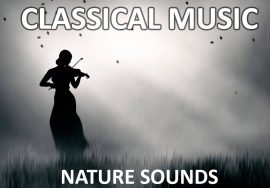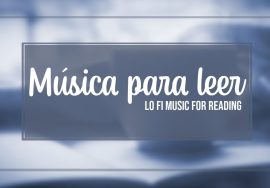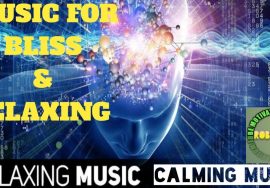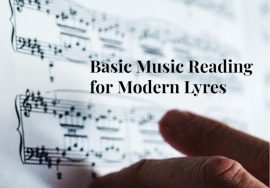How to Read Music: from Beginner to Advanced
In this lesson I am going to teach you how to read music from beginner to advanced techniques. I will walk you through how to read sheet music from the very beginning to the more advanced techniques.
More lessons for reading music
SUBSCRIBE AND TURN ON ALL NOTIFICATIONS:











Love your lessons. Found them recently and have learned a lot.
Hey students!
I want to let you know that there is a Fall Sale going on right now for the courses over on my website: https://www.pianolessonsontheweb.com . Whether you are a beginner looking for a solid foundation to build on or you are looking to take your existing skills to that next level, my courses will help you do just that! Sale ends October 10th.
I like how you always emphasize the importance of sight reading, because that’s the part that fascinates me the most. A linguist in me makes me look at sheet music and see a foreign language with its own morphology, syntax, grammar and whatnot. Being able to decipher all this seems like an awesome skill.
Anyways, I’ve been practicing it from the very beginning of learning piano and I’ve been instinctively doing this the “interval way”, wondering if I was doing it right and not cheating because it felt easier and faster than naming all the notes in my mind first. In this video you helped me really understand what I was doing. Now, if you could help me really understand what I’m doing with my life in general, it would be great ?
In all seriousness, thank you for making everything so clear! You’re the best.
When i read a sheet music using intervals, i don’t think about what the next note is going to be, i just think about whether it’s a 2nd, 5th, 4th and etc. It helps when i want to play a sheet music fast but i tend to forget a few notes when i replay it.
These tutorials get better and better each time you redo them. Thanks so much for your effort.
Thank you very much for the wonderfully clear explanation regarding the relationship between the treble and bass clefs. Much appreciated. I can sleep now.
Great demonstration using the piano.
Thanks for a very informative video. As a complete beginner I have some questions though:
1) Why did musicians invent a term “second” if there’s already a term “tone”? These two look completely equivalent to me
2) How do you know if notes of certain interval “match” or “don’t match”? You say even number don’t match and odd number match, but I hear an even number interval as “a sound number 1” and an odd interval as “a sound number 2”. Second number is not better or worse than first, it’s just another sound. So is there a way to figure out what match and what doesn’t?
Thanks
Thank you so much. I’m a self learned pianist for nearly 3 years and don’t have the slightest idea about reading sheet music or proper music theory. I can’t describe how much your videos has helped me and hopefully other pianists as well. Again I would like to sincerely thank you for your help.
@Anna Khomichko Pianist yes, thanks a lot for your support! It means a lot.
Good luck with learning! Yes, theory is extremely important for playing and general understanding of music
You’re very welcome!
“Every good boy deserves friends” sounds so much better.
Every good bird does fly. Short and sweet
The Moody Blues says it is Every Good Boy Deserves Favor.
@Mary Mac Maybe “Every goofy boy dances funny” or “every goofball dances funky/funkily” sounds more natural.
We always learned every good boy does fine
@LatteMoment The key word is “deserves.” If you don’t have friends, it doesn’t mean you don’t deserve them or that you’re not a good boy.
You are an excellent teacher. Thank you!
One of the rules they teach you for sight reading is that you have to keep reading new sheet music. If you read the same sheet music it will begin to be muscle memory and not sight reading. That’s partly true, but not completely.
I have been sight reading for over 3 years and I can play from sight now, even with new music. I bought about 10 songbooks 3 years ago with a total of about 500 songs. I played them from cover to cover. Then I did it again, and again, and again. It took about 3 or 4 months to get through them all each time. By the time I got back to the first song I didn’t remember it so it was like reading a new song again.
After doing that for 3 years I began to remember bits and pieces here and there, but I can’t play anything from memory. That was never my goal. My goal was to be able to play from sheet music. So I decided to test if I am really playing from sight. I bought a new book with about 80 songs that I had never played before. No problem. I’m not perfect, but I can get through them first time with few errors and almost at full speed except for some really difficult ones.
So, that’s my experience.
Brilliant lesson. Thank you so much
These video’s really are the best I’ve seen for us people trying to learn the piano.
Your tips and tricks are useful. But sight reading is not easy (and not much fun either). It’s why so many people quit piano playing, it takes too long to master. Learning how to read the treble clef only and using fake books for the left hand chords is much less painful. Not ideal if you want to play classical music, but for most rock, pop, and country, you’ll get by just fine.
wow, that makes SO much sense! Thanks Much for sharing this info.
You are amazing teacher. Thank you. Which software are you using for the note writing in music sheet? Any PC version? You did mention in one of your video but I cant find it as I saw lots in your channel.
easy to follow, solid instruction
I’m learning violin, but this information is still helpful. I find that lots of piano lessons apply to violin. And, any tips for reading the treble clef are appreciated.
In an example like you have a 17:20 which is F, A, and E, how do you know that is an F7 (-5) instead of an A6 inverted (-3)? Is it only determined by context (the other harmonics in the passage)?
Thank you very much super clear?
I have to say I’ve been talking about your videos to my boyfriend who got me a keyboard for Xmas. I’ve gone through many of your videos and I really want to say thank you SO MUCH. Never learned sheet music but I’m getting there! Posting these videos is very noble of you and I’m sure many people feel the same. You are appreciated!